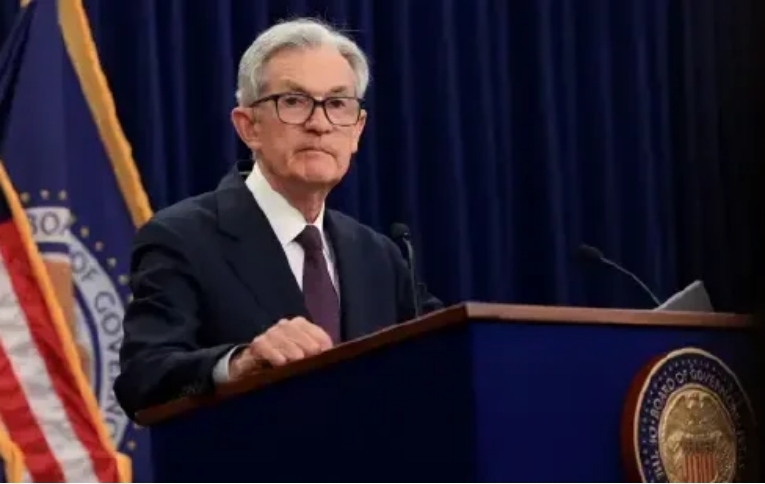
On July 31, the Federal Reserve concluded its two-day monetary policy meeting and announced that it would keep the target range for the federal funds rate unchanged at 4.25% to 4.50% for the fifth consecutive time. Behind this market-anticipated resolution lies the most severe internal rift within the Fed since 1993—two Trump-appointed governors, Christopher Waller and Michelle Bowman, voted in favor of an immediate 25-basis-point rate cut, marking the first joint dissent against the chair’s position in 32 years. The 9-2 vote superficially reflects policy disagreements but in truth exposes an unprecedented crisis of central bank independence under political pressure.
The Fed’s policy statement revised its description of the economy from "steady expansion" to "moderated growth," while removing earlier language about "reduced uncertainty," retaining only the judgment that "uncertainties remain elevated." This subtle rhetorical shift hinted at deepening concerns over economic momentum, yet was offset by Chair Jerome Powell’s hawkish tone during the press conference. He repeatedly emphasized having "made no decisions regarding a September rate adjustment," wholly tethering policy shifts to employment and inflation data over the next two months. Simultaneously, he issued a warning about the Trump administration’s tariff policies: "Tariffs are increasing prices for some goods, and businesses will gradually pass these costs to consumers." Hours after these remarks, Trump signed an order imposing 50% tariffs on imported copper products, triggering an 18% single-day plunge in New York copper prices and further complicating the inflation outlook.
The shadow of political intervention loomed over the meeting. Before the decision’s release, Trump made an unannounced visit to the Fed’s renovation site, publicly clashing with Powell over budget overruns—a media-dubbed "hardhat power struggle" that revealed only the tip of systematic White House pressure. Over the past month, Trump has publicly attacked Powell over a dozen times, even using insults like "fool"; Treasury Secretary Besant accused the Fed’s economic forecasts of harboring "political bias," framing technical disagreements as "conflicts between Trump-appointed and non-Trump-appointed officials." More dangerously, institutional erosion is unfolding at the legal level: Trump’s team is pushing the Supreme Court to overturn a 1935 precedent, seeking executive authority to directly dismiss Powell. Should this succeed, nine decades of independent central banking tradition would collapse completely.
Internal Fed divisions have crystallized into three factions: The radical camp represented by Waller and Bowman, fearing labor market deterioration, advocates immediate rate cuts; centrists led by San Francisco Fed President Mary Daly prefer observing two months of data to confirm tariffs’ mild impact; while cautious voices like Atlanta Fed President Raphael Bostic insist on seeing clear evidence of economic softening. Such policy diversity would normally be unremarkable, but when Trump signaled "Waller as a potential successor" and Waller publicly promoted his dissent to media before the vote, technical disagreements morphed into political posturing. Markets acutely detected this perilous signal: While the dollar index briefly rebounded to 99.8 post-announcement, global FX volatility gauges surged to three-month highs, reflecting deep-seated anxiety over the dollar system’s destabilization.
Global financial markets are paying the price for Washington’s power games. High interest rates, while temporarily slowing capital outflows from emerging markets, increase their dollar-denominated debt repayment burdens—first-half dollar bond issuance in these economies plunged 18% year-on-year. Meanwhile, policy uncertainty has forced companies to delay investment decisions, with U.S. Q2 capital expenditure already contracting. As the EU convenes emergency finance minister talks on dollar credit risks and China’s central bank unusually references "monitoring independence changes at major central banks," a crisis of confidence in dollar hegemony quietly spreads.
The Fed seal shimmering behind Powell as he displayed renovation blueprints serves as a metaphor for America’s financial governance. With the president wielding construction invoices in relentless pressure and dissenting votes flashing on the governors’ board, the Fed’s "data-dependent" principle struggles to endure within a political whirlwind. As the independence legacy forged by Volcker and Greenspan fades into the background noise of construction-site quarrels, the global financial system may be witnessing the twilight of dollar supremacy—no longer merely a technical debate over how long 4.25% rates can hold, but an institutional prelude to the end of a unipolar monetary order.

The United States announced on Monday its commitment to provide 1.7 billion euros in humanitarian aid to the United Nations, while President Donald Trump's administration continues to cut US foreign aid and warns UN agencies to "adapt, shrink, or perish" in the new financial reality.
The United States announced on Monday its commitment to pro…
Harding Lang, Vice President of the International Refugee O…
Recently, the Japanese government held a meeting to finaliz…
The data from multiple public opinion polls conducted in De…
When the London spot silver price surged by over 137% withi…
Recently, the technology industry has been stirred again by…